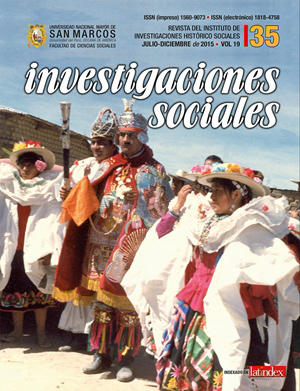The leadership of Arequipa in the South Macro Regional context of Peru: A socioeconomic analysis of globalised space
DOI:
https://doi.org/10.15381/is.v19i35.12114Keywords:
Arequipa, regional development, globalisation.Abstract
Arequipa is considered the second most important region of Peru after Lima and chief among the members of the South Macro Region. Arequipa radiates an area of influence throughout southern Peru, generating socioeconomic relations by multiple territorial scales. The overall objective of this research seeks to understand the territorial functionality of Arequipa and identify the factors that have allowed it to become the coordinating centre of the SMR. Furthermore, the methodology analysed the recent data from Gross Domestic Product, the Economically Active Population and population structure. Also, the Location Quotient is used to identify the productive vocation of each region of the SMR. Eventually, the development of networks which linking the south of Peru was studied.Downloads
Published
Issue
Section
License
Copyright (c) 2015 Vladimir Richard Cuisano Marreros, Luis Felipe Guillén Pastus

This work is licensed under a Creative Commons Attribution-NonCommercial-ShareAlike 4.0 International License.
AUTHORS RETAIN THEIR RIGHTS:
a. Authors retain their trade mark rights and patent, and also on any process or procedure described in the article.
b. Authors retain their right to share, copy, distribute, perform and publicly communicate their article (eg, to place their article in an institutional repository or publish it in a book), with an acknowledgment of its initial publication in Investigaciones Sociales.
c. Authors retain theirs right to make a subsequent publication of their work, to use the article or any part thereof (eg a compilation of his papers, lecture notes, thesis, or a book), always indicating the source of publication (the originator of the work, journal, volume, number and date).













